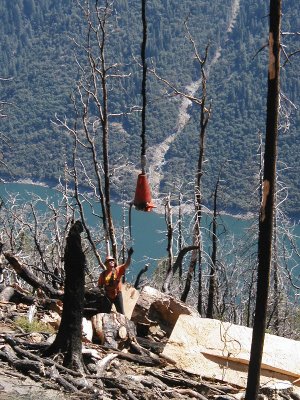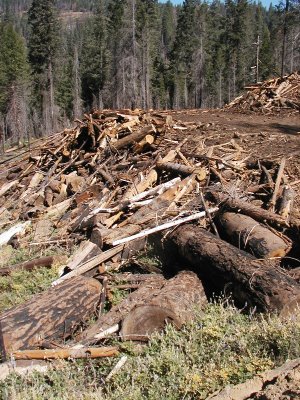The "log" days of summer

Currently, here's the meat and potatoes of my job. This is the edge of a helicopter landing, where the logs flown in from where they were cut are dropped, to be sorted and loaded on to a truck to send down the road to the lumber mill. Helicopter logging is very hectic and their goal is to keep the copter working as efficiently as possible, even if major messes have to be made. Of course, I'm supposed to keep these messes to a minimum but, I can't be there every hour of every day.
Of course, when the inevitable end comes, they always have some kind of mess to clean up, which they aren't too happy to be doing. They've got their logs out and they want to skedaddle on out of there to do their dirty work somewhere else. That's where I come in, brandishing the timber sale contract and the agreements they signed before logging began. Sometimes it's EXTREMELY expensive to clean up their messes and this landing was no exception. The above photo shows all the crap and limbs they pushed over the edge which they hoped they would not have to retrieve. Being that this landing was controversial even before logs were flown in, this landing was to become a showcase of how to clean up a helicopter landing close to two perennial streamcourses on both sides.
After a few weeks and much prodding, they did do some tremendous shaping of the landing for proper drainage and erosion control. They also did some excellent slash removal and piling to allow firefighters to burn off the excess fuels that were flown out of the woods (which was a big part of the overall restoration plan to reduce future wildfires and intensities). Both pictures were taken from the same spot.
Finally, I just HAD to put in a more scenic picture. It's amazing the places where some trees choose to grow and thrive. This incense cedar is very old and the roots somehow support the trees and draw in ample amounts of water to get so big. Chances are, this tree will continue to live well beyond my own lifespan, providing a wildfire doesn't come along and torch it off into oblivion.

Labels: logging



